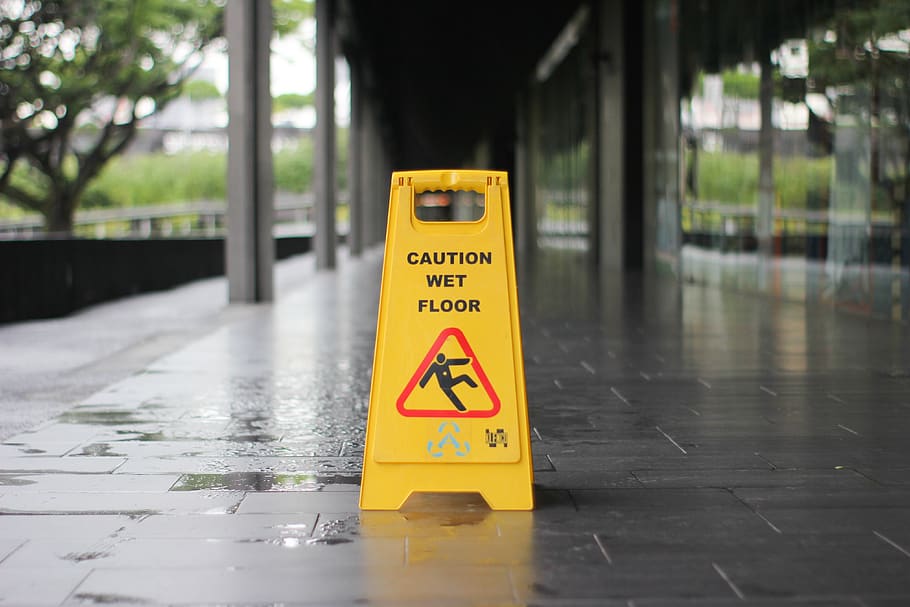Slips, Trips and Fall Prevention
Slips, trips, and falls can happen anywhere on Idaho State University Campus(es). On occasion, they can result in serious injuries, such as physical disabilities and death, and can lead to substantial costs to both the employer and the injured worker. Slips, trips, and falls are among the most frequent causes of workplace injuries.
Maintaining good housekeeping practices are essential while performing work on ISU's campuses. Ensure work areas are kept clean, organized, and free from hazards to reduce the risk of accidents.

Occur when there is too little friction or traction between your feet and the walking surface. The most common causes of slips are wet surfaces, ice or other weather hazards, spills, and poor tread on footwear. Preventive measures include:
- Wet surfaces: Make sure you shorten your stride, walk with your feet pointed out slightly, and make wider turns.
- Spills: Clean up immediately. If you are unfamiliar with the contents of the spill, contact EHSS or Public Safety.
- Weather hazards: Walk slowly so you can react to traction changes. Wear slip-resistant shoes or boots, and dry off shoes as soon as practical after entering a building (wet shoes on dry floors are as dangerous as dry shoes on wet floors). Wear sunglasses on sunny winter days to see slippery areas more easily.
Commonly occurs when your foot strikes an object and your momentum throws you off balance. To minimize the potential for this type of injury:
- Do not allow carried packages that obstruct your view.
- If glasses fog due to atmospheric changes, clear them immediately.
- Use designated walkways.
- Close desk and file drawers when not in use.
- Report burned out or missing lights.
- Be aware of elevator threshold positions.
- Report any uneven or broken pavement, sidewalks, or handrails.
Usually take place from one level to another. Preventive measures include:
- Do not stand on chairs to reach a high object. Always use an approved ladder.
- When using ladders select the proper type and size, and use it properly. Do not step/stand on the top 2 ladder rungs.
- Walk up and down stairs and never jump from the last step.
- Use handrails.
- Report any unsafe conditions.
